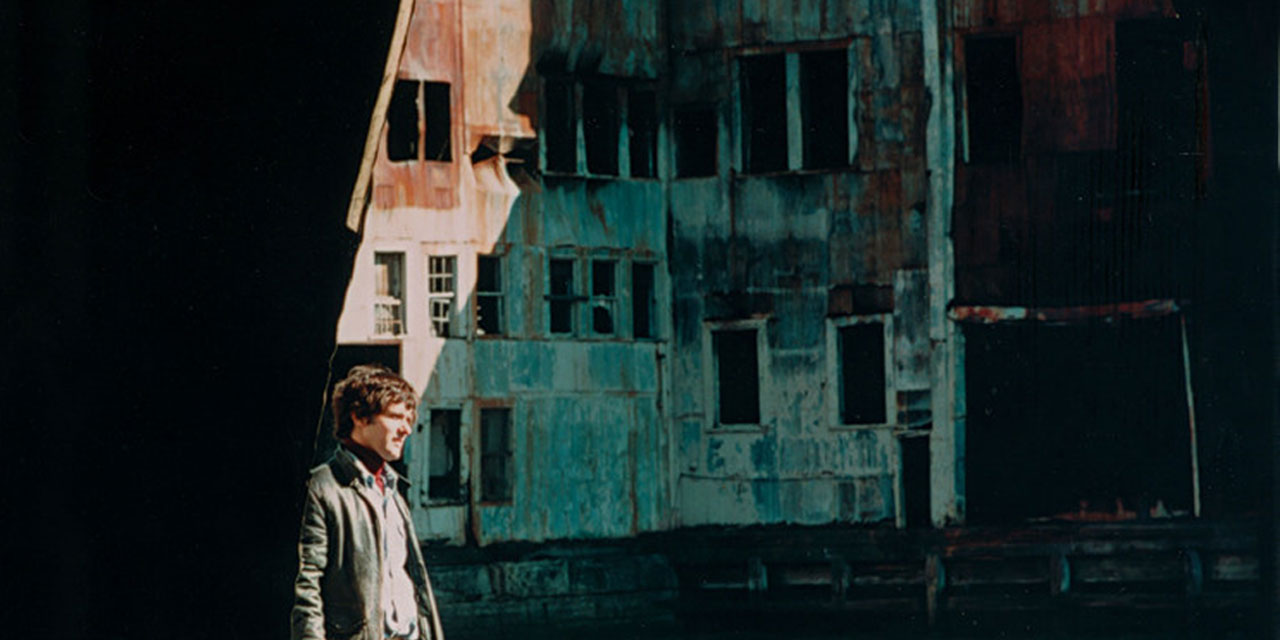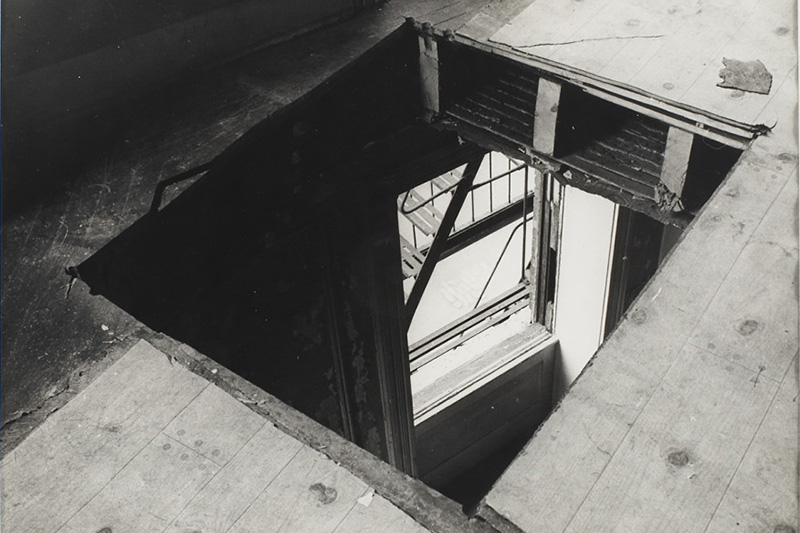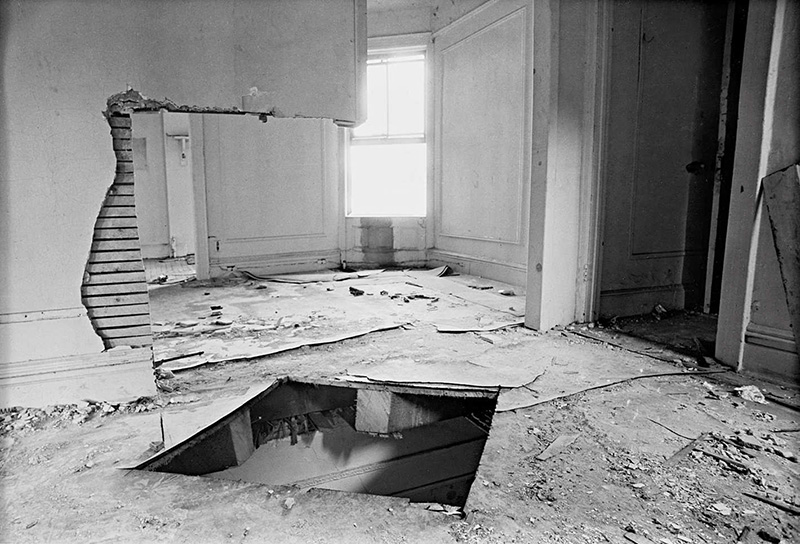ART-PRESENTATION: Gordon Matta-Clark, Unravel The Unfound
 Born in New York City by the artists Roberto Matta and Anne Clark, Gordon Matta-Clark came of age during a time of political turmoil against a backdrop of urban infrastructure in crisis. He studied architecture and graduated from Cornell University in 1968, returning to his native New York City the following year. Struck by the inability of Modernist forms to provide solutions to the city’s increasing social problems, he began to combine his activist concerns with his artistic production.
Born in New York City by the artists Roberto Matta and Anne Clark, Gordon Matta-Clark came of age during a time of political turmoil against a backdrop of urban infrastructure in crisis. He studied architecture and graduated from Cornell University in 1968, returning to his native New York City the following year. Struck by the inability of Modernist forms to provide solutions to the city’s increasing social problems, he began to combine his activist concerns with his artistic production.
By Efi Michalarou
Every artwork and action by Gordon Matta-Clark was made to demonstrate our own potentiality and inherent ability to physically transform our space, our city, our politics. Direct public engagement was crucial to his practice. He wanted to inspire everyday people to think and act in the space surrounding them, to unmake, remake and live in it without fear. The exhibition “Gordon Matta-Clark Unravel The Unfound” focusses on the important contribution of Gordon Matta-Clark to rethink architecture and urban space. Best known for his monumental cuts, holes, apertures, and excisions to the facades of derelict homes and abandoned buildings, Matta-Clark’s work provides a potent critique of architecture’s role within the capitalist system. Furthermore Matta-Clark’s work has played a significant and pioneering role in the development of public art, contributing to the expansion of sculpture, the development of performative and social practices and the birth of site-specific artistic strategies. The exhibition offers an in-depth assessment of the artists’ groundbreaking works ranging from large scale film projections, photos, collages and artists books as well as archival documentation including personal “cut-notebooks”, art cards and writings on social projects and Anarchitecture. Through a careful and cohesive selection of works the exhibition points to the contemporary relevance of Matta-Clark and argues for his importance as a pioneer of public art and of what has come to be known as social practice art. At the 1969 exhibition “Earth Art” at Cornell, Gordon Matta-Clark met Robert Smithson and helped Dennis Oppenheim construct two projects, including “Beebe Lake Ice Cut”. Like the earth artists, Matta-Clark rejected the commodification of art, eventually working in photography, film, video, Performance, drawing, photo collage, and sculpture in the form of large-scale interventions into existing architecture. Over the following two years, he explored the metamorphic possibilities of cooking, beginning by frying Polaroid photographs in oil with gold leaf. In the early ’70s, he helped organize 112 Greene Street, an exhibition space showing new art. He also collaborated on “Food”, a combined restaurant and performance piece, he made “Garbage Wall”, a prototype shelter for the homeless. During the ‘70s, Matta-Clark made the works for which he is best known: his “Anarchitecture”, temporary works created by sawing and carving sections out of buildings, most of which were scheduled to be destroyed. He documented these projects in photography and film. Although he made interventions into a former iron foundry in Genoa, Italy, in 1973, his first large-scale project has been defined as “Splitting” (1974). To create this work, Matta-Clark sawed two parallel slices through a nondescript wood-frame house in Englewood, New Jersey, and removed the material between the two cuts. In addition, he cut out the corners of the house’s roof, which were subsequently shown at John Gibson Gallery in New York. He made similar gestures in some of his photographs, cutting the actual negatives rather than manipulating individual prints. In “Day’s End” (1975), the artist removed part of the floor and roof of a derelict pier in Manhattan, creating a “Sun and water temple”. After he worked undiscovered on the project for two months, the City of New York filed a lawsuit against him, it was eventually dropped. For the Biennale de Paris the same year, he made “Conical Intersect” by cutting a large cone-shaped hole through two 17th Century houses, which were to be knocked down to construct the Centre Georges Pompidou. In 1976, Matta-Clark created his own controversy. Rather than participating in an exhibition alongside well-known architects as planned, he shot out the windows of the Institute of Architecture and Urban Studies in New York. This act has been interpreted as a protest against the architectural establishment. Interested in the inner workings underneath the visible, he filmed and photographed tunnels, sewers, and catacombs in New York and Paris in 1977, a project aided by a fellowship from the John Simon Guggenheim Memorial Foundation. Matta-Clark died from cancer on 27/8/1978. The exhibition will elucidate Matta-Clark’s evolution through rarely seen archival materials, examining amongst other things his unrealized proposals for public art projects and his thinking about Anarchitecture – a word and concept through which he wrestled with his own ideas about built space.
Info: Curators: Antonio Sergio Bessa and Jessamyn Fiore, KØS Museum of Art in Public Spaces, Nørregade 29, Køge, Duration: 26/5-20/9/20, Days & Hours: Tue-sun 11:00-17:00, https://koes.dk




